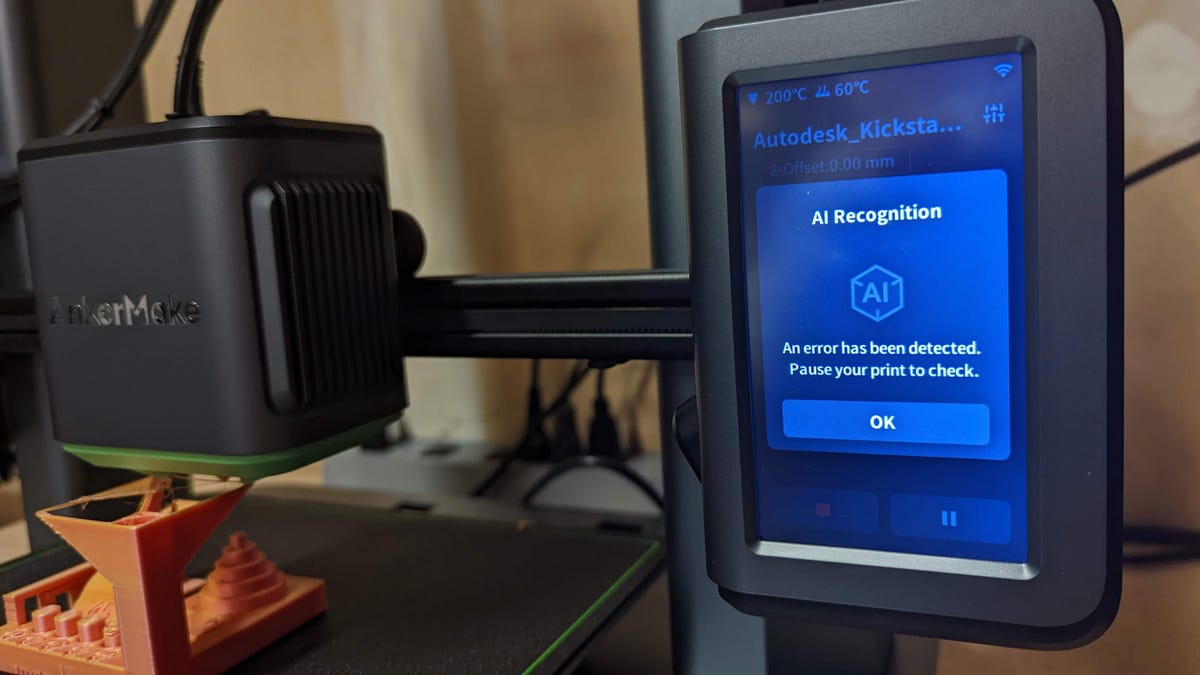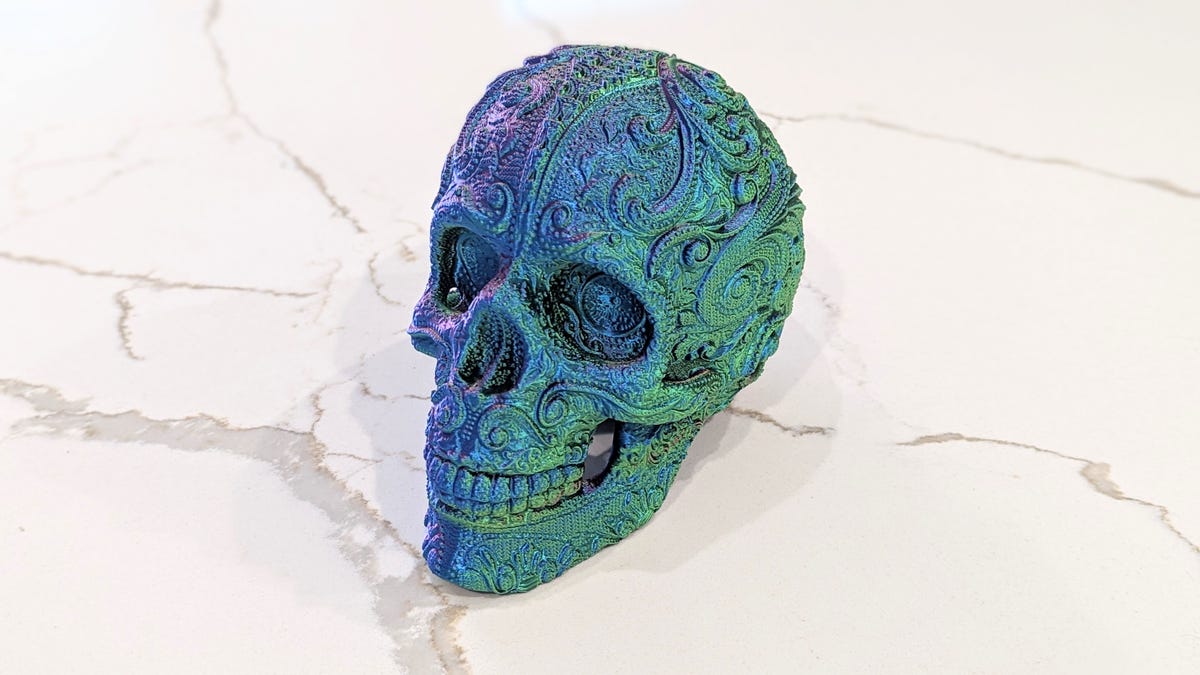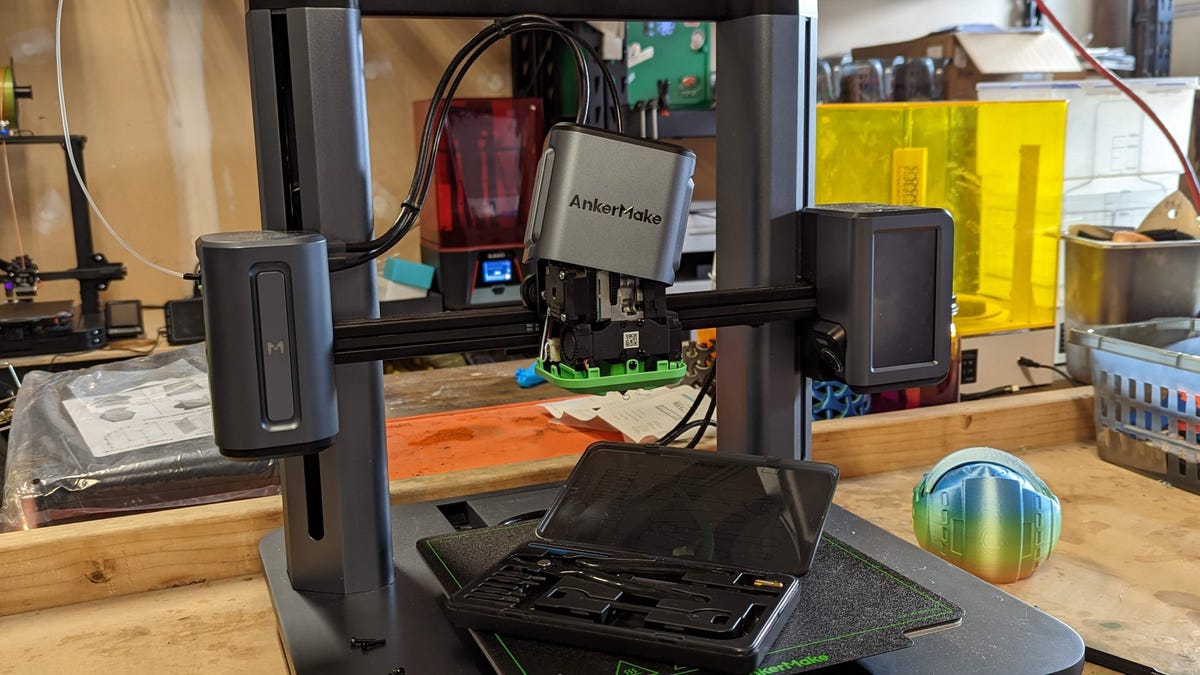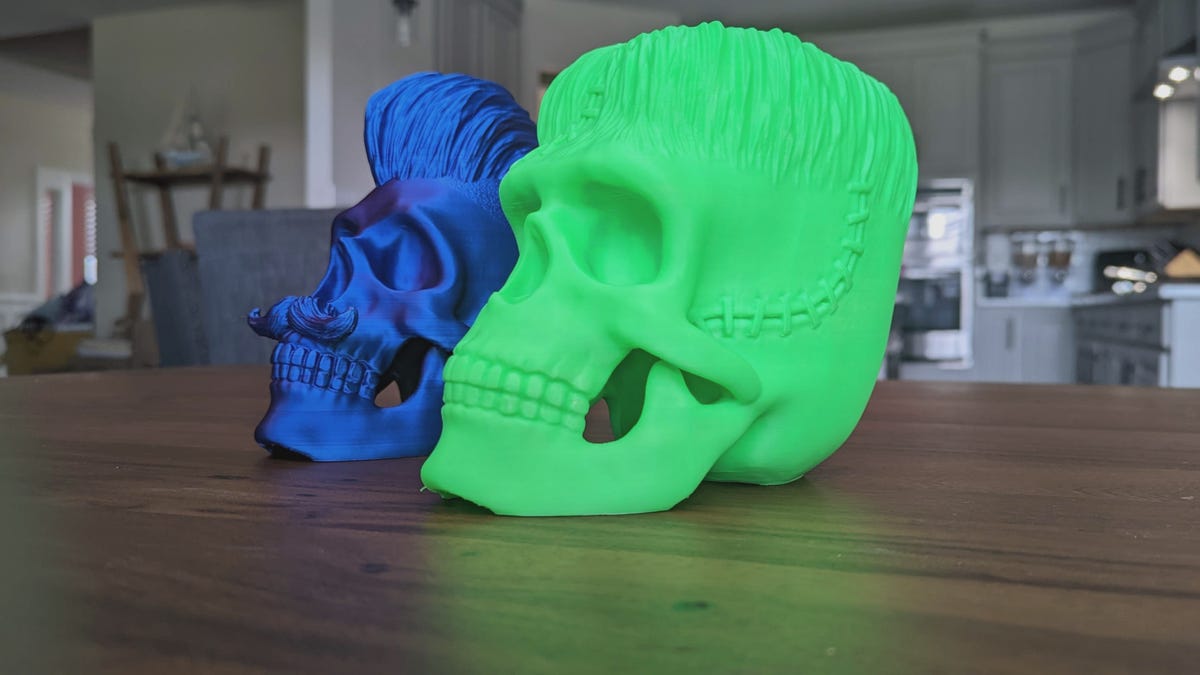Tech company Anker is best known for its power banks and phone chargers. Now the company has branched out into 3D printers, and its first model is the $800 AnkerMake M5. Based on my time with it, I think it’s a winner.
When Anker first announced it was making a 3D printer, there was some skepticism. The company had no background in this area, and it introduced the product through a Kickstarter, which can be a red flag. It didn’t help that some of the claims sounded far-fetched, including 5x faster print speeds and an AI camera that could post time-lapse videos to your TikTok.
Now, after raising an impressive $8.8 million on Kickstarter, it was up to Anker to deliver on the promises. Did it? Yes, or at least mostly so.

James Bricknell / CNET
Setting up the AnkerMake M5 was simple. A few screws and connecting some tubes was all it took to get the machine ready for its first print. It’s not a big machine either, but solidly built. It needs a low center of gravity to print at high speed without a lot of vibration. From the outside, it looks great. A lot of 3D printers have a DIY feel to them, but this looks like a professionally designed machine from head to toe.
When powering on for the first time, there’s a snazzy welcome animation that goes into setting up the Wi-Fi and downloading the companion phone app. A lot of the setup is done through the app, including entering your Wi-Fi password. Once that’s done, it’s ready to print the Benchy test file that comes on the built-in storage.
The app itself is still in beta, so not all of the features work, but the live camera, time-lapses and notifications do. Being able to see your print and be told when it is finished is great, but being told there is an issue is even more valuable.
It’s more advanced than other remote monitoring solutions because the camera on the AnkerMake uses cloud-based AI to check what your model should look like and then compare it to the actual model as it prints. This is how it’s supposed to recognize when errors occur and warn you.
It works well up to a point. I like that it warns you of potential errors without actually stopping the print, but if it sees something major — a big swirl of messy filament for example — it can put on the brakes. Should something like that occur, it will pause the print until you can fix or remove it. The only issue I have found is that it sees people walking in the background as an error in your print. It means you get a fair amount of false notifications, which can become irritating. Thankfully, you can quickly look at the live stream from wherever you are to check what’s up. (Or point it toward a wall.)
Quality matters

James Bricknell / CNET
The quality of the prints on the AnkerMake was good across the board. When you are paying $800 for a 3D printer you would expect that, and the AnkerMake is on par with the best 3D printers in that price range. My daughter and I were on a huge skull kick — it was Halloween after all — and Hex3D offered us a lot of variety.
The deluxe skull you can see here was printed with no supports and very few errors. It looks beautiful in this tri-blend PLA from GVMTP, shifting colors as you move. I’ve had so few print failures on this machine that I’m waiting for the other shoe to drop, but so far it has given me almost perfect output in every test.
Of course, you can still see layer lines, and there is some curling on the bottom of the skull where it could have used some support. I also printed the OG CNET printer test, which, save for some wobbly towers, came out looking good.
Overall the quality is on par with any printer in this price range. But if it is only as good as other printers at the same price, why should you choose it? Because it prints at a speed I have never seen.
Speed demon

James Bricknell / CNET
“Five times faster printing” is a big claim and while it might be technically true in some cases, it never works that way in the real world. Anker got that number by dividing the M5s print speed (250mm/s) by the average speed of the current crop of competing printers (50mm/s)m, giving them 5x. This is inflated, as printers like the Prusa Mk3s Plus can easily reach speeds of 80mm/s, so it’s more of a marketing bullet point.
The truth is, it isn’t five times faster. In all my testing, it’s about twice as fast. Anker now says it could potentially print as much as 69 percent faster than a 50mm/s printer, but I haven’t been able to get that kind of results. There are a huge amount of factors that go into the speed of a 3D printer — including acceleration, filament flow rate and other details — so numbers alone don’t really explain it. Frankly though, even twice as fast is shocking. The Flexi Skeleton from Flexi-Factory, which you can see above, would normally have taken about three days to print. That’s 30 hours of physical printing and two nights of the machine being idle while I’m asleep. With the AnkerMake, it was done in 15 hours with no downtime. That’s extraordinary.
TikToks and time-lapses
@keridel the time lapse on the @ankerofficial is cool but I really wish it was a portrait camera! #3dprinting♬ Halloween ・ cute horror song – PeriTune
One of the camera features that Anker has included is aimed at the social media market. Time-lapse of models being 3D printed often look amazing, and while this 1080p 30fps camera isn’t the very best, it does automatically save every successful print into a time-lapse that you can share on your social media.
Right now the video is oriented in landscape rather than portrait, so it takes a little bit of editing to make it work well on TikTok, YouTube Shorts or Instagram, but I am hoping that a firmware update could fix that. In the meantime, an app like InShot can crop those videos for you. I appreciate that Anker understands how TikTok and other social media platforms play a big part in maker culture, and having these features baked in is a big plus.
It’s not all sunshine and rainbow filament

James Bricknell / CNET
While I think the Anker is an excellent machine overall, it isn’t perfect. When I first turned the machine on, the fans whirred to life like a jet engine, followed by a grinding noise that reminded me of a cheap fan cooling a power supply. This is a shame, as the rest of the machine looks like a quality product. Cheap fans are often used because they are replaceable, but we really shouldn’t have to.
Replaceability is also a sticking point with the M5. It uses a custom heating block, a custom dual-drive system and even a custom nozzle. That means if something breaks or wears out (as nozzles do), you will have to buy replacements from Anker, no matter how much they cost. Interoperability and cooperation are a cornerstone of 3D printing, so I’m hoping that third-party parts will appear soon.
It’s also worth noting that Anker uses open-source code in both its PC software, called a slicer, and the firmware inside the machine. This isn’t a problem on its own — that’s what open-source is for — but this code has a GPL (General Public License) license that requires Anker to make “… available complete source code of licensed works and modifications…” and it hasn’t done that.
When I reached out for comment, Anker had this to say:
The AnkerMake Slicer software is currently in beta phase and only available for testing by media and backers. AnkerMake Slicer and firmware use some open-source codes obtained through the General Public License. We respect the work of other brands and the 3D printing community and follow the GNU license terms. We will make the AnkerMake Slicer software and firmware open-source with the release of the official version in mid-November 2022.
While that sounds reasonable, a business model that is built on open-source and the sharing of ideas looks unfavorably on companies that don’t comply with open-source standards, especially when they are using multiple pieces of software and hardware to make money without following the rules.
The balance point

James Bricknell / CNET
Printing quickly is nothing new. If I wanted to, I could push any of the machines I have in my workshop up to 250mm/s and probably manage to get them to print something. It would look like absolute trash though. That’s what the AnkerMake brings to the table, and what makes it stand out from the crowd: It can print extremely quickly and still produce results you would want to use.
Anker has found a balance point between speed and quality with the AnkerMake M5 and, along with its good looks and fun camera extras, has a real chance to bring in more mainstream users. The days of speed are coming, and I am here for it.




